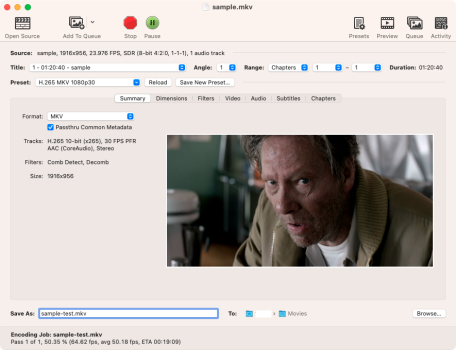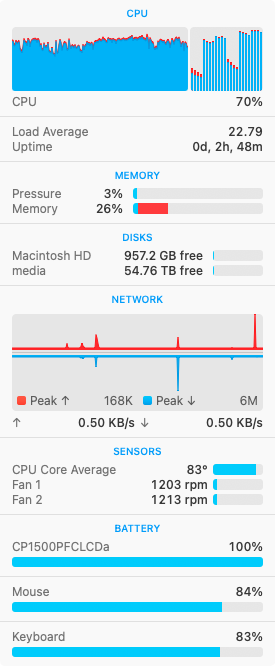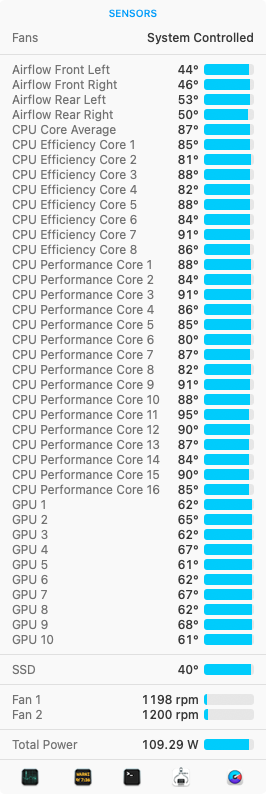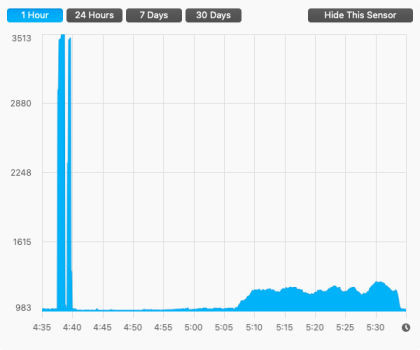My Studio M2 Max 12C/38C 64GB, 4TB SSD arrived. It's dead quiet for me, and my office space is very very quiet. Very happy so far.

Become a MacRumors Supporter for $50/year with no ads, ability to filter front page stories, and private forums.
Mac Studio 2023 fan noise - It's significantly quieter than the previous gen! Base fan speed lowered from 1300RPM to 1000RPM. Still whines a little
- Thread starter AdamSeen
- Start date
- Sort by reaction score
You are using an out of date browser. It may not display this or other websites correctly.
You should upgrade or use an alternative browser.
You should upgrade or use an alternative browser.
That's what I thought. I'm VERY glad I got my Mini Pro then! It's working out quite well btw, haven't even heard fan noise with it yet. It is slower at graphics stuff than my Studio Max was, but that's a minor part of what I do.Ifixit have completed a tear down and found it’s the same internals as the first gen. No obvious cooler changes, it appears the only major change apart from the chips themselves is a fan curve change.
Is the fan curve controlled by software or hardware in macOS?
Is there a difference in terms of resources when using a 3rd party app with a rule or fan curve set to ramp up the fans when temps rise on an M1 studio vs the new, internal fan curve on an M2 Studio?
I know it’s hardly a huge cpu overhead, I use my own fan settings on my MBP to up the speeds much earlier than apple decided on a 2012 MBP, just curious really
Is there a difference in terms of resources when using a 3rd party app with a rule or fan curve set to ramp up the fans when temps rise on an M1 studio vs the new, internal fan curve on an M2 Studio?
I know it’s hardly a huge cpu overhead, I use my own fan settings on my MBP to up the speeds much earlier than apple decided on a 2012 MBP, just curious really
I think it's at the firmware level, but it can be controlled by external fan software. The problem is, I don't think any external apps offer precise curves and it's more difficult to lower the M1 Studio to below its default of 1,100RPM to 1,000RPM. I'd considered using software when I had the M1 Ultra, but I felt I don't want to rely on it, when it really should have been in the firmware at the start and the 2.2Khz whine was too annoying.Is the fan curve controlled by software or hardware in macOS?
Is there a difference in terms of resources when using a 3rd party app with a rule or fan curve set to ramp up the fans when temps rise on an M1 studio vs the new, internal fan curve on an M2 Studio?
I know it’s hardly a huge cpu overhead, I use my own fan settings on my MBP to up the speeds much earlier than apple decided on a 2012 MBP, just curious really
If I were an M1 Studio owner, I'd hope for a firmware fix or upgrade to the sonically much better M2 Studio.
Buying now...
You are going going to love it. If it did not have a little LED on the front I would not know if it was on (when the display goes to sleep)
Why couldn't they include this same LED on the freakin MacBooks? Hard to tell when the laptop is on, off, or on standby...You are going going to love it. If it did not have a little LED on the front I would not know if it was on (when the display goes to sleep)
Why couldn't they include this same LED on the freakin MacBooks? Hard to tell when the laptop is on, off, or on standby...
I miss the days when;
1. The MacBooks had a glowing LED that used to slowly pulse when it was sleeping.
3. Had a little button you could press that would light up a few LED's on the side to show you the approximate battery charge level, when the lid was closed.
4. Had a glowing white backlit logo.
5. Did not automatically power on when you opened the lid.
At least we have got MagSafe back. Hopefully some of the above will come back as well.
Well, not anytime soon, it seems. Maybe in the 2030s, when most likely, another redesign will be made? Cuz, after the release of the 15-inch MacBook Air, it is basically a guarantee that this minimalist design language will stay until the end of the decade, at least.I miss the days when;
1. The MacBooks had a glowing LED that used to slowly pulse when it was sleeping.
3. Had a little button you could press that would light up a few LED's on the side to show you the approximate battery charge level, when the lid was closed.
4. Had a glowing white backlit logo.
5. Did not automatically power on when you opened the lid.
At least we have got MagSafe back. Hopefully some of the above will come back as well.
Not all Mac Studio's (M1 or M2) have this fault/problem.No it is not. It is a fault, an error in design, confirmed by apple technician to me. You just cannot hear it.
well.
It could depend on your placement or the occasion. Mine is silent most of the time. The whine just happens randomly and only in a very silent room.
I gathered so many reports and people who installed 100s of Mac Studio said that EVERY studio they touched had the whine in the end.
Mine was for repairs at Apple and they confirmed it being there but within parameters. So...maybe there are slight variations in production lines etc. but IT IS A MAJOR ISSUE and if it is fixed in further models, I am happy. Silly me bought a first edition, so my crying is not too loud
Apple "technician" does not equal ENGINEERING so believe what you want... don't unilaterally decide others simply cannot hear.
I've located water leaks in ceilings and very subtle rodent, termite and wasp activity that no one else detected.
I hear alarm systems when walking into buildings, homes, shopping malls, etc.
The most annoying one is a very low periodic sound that took a long time to figure out. It emanates from a system designed to burn off methane gas produced by a landfill and in the process causes low frequency vibrations. It is 6+ miles away from where I live as the crow flies and no one else (friends, family, neighbors, cops, etc.) can hear it!
My Base Max is situated in a quiet corner of my basement office. I can hear the faint sound one of my 27" display makes when it is on, the even quieter sound of my overhead LED lights and nothing beyond an almost imperceptible whirring from the Studio. The latest version of Macs Fan Control show it is hovering around ~1318-1335 RPM.
My fans on the Studio M2 Max seem to sit around 992-1003rpm most of the time. No whine or noise perceivable by me, and I typically hear every subtle whine or noise from everything.

I captured the whine on the new M2 Studio.


When pushing my Studio on multi-hour video upscalings - the fans were up to around 1,350. I noticed a faint but intermittent whine. One at 2.4Khz (same as the original Mac), which is less loud, and two more around 1.3Khz & 1.35Khz, which was more pronounced.
I think it's safe to say the original whine problem hasn't been completely fixed. But so far I've only experienced it under large loads - it hasn't occurred sub-1300 RPM
Audio attached:
[stops around 34sec - starts again around 40 sec, stops again around 1:14 - increased DB so you can hear it]
When pushing my Studio on multi-hour video upscalings - the fans were up to around 1,350. I noticed a faint but intermittent whine. One at 2.4Khz (same as the original Mac), which is less loud, and two more around 1.3Khz & 1.35Khz, which was more pronounced.
I think it's safe to say the original whine problem hasn't been completely fixed. But so far I've only experienced it under large loads - it hasn't occurred sub-1300 RPM
Audio attached:
[stops around 34sec - starts again around 40 sec, stops again around 1:14 - increased DB so you can hear it]
Last edited:
Can you hear it without boosting it in post?I captured the whine on the new M2 Studio.
View attachment 2223774
View attachment 2223776
When pushing my Studio on multi-hour video upscalings - the fans were up to around 1,350. I noticed a faint but intermittent whine. One at 2.4Khz (same as the original Mac), which is less loud, and two more around 1.3Khz & 1.35Khz, which was more pronounced.
I think it's safe to say the original whine problem hasn't been completely fixed. But so far I've only experienced it under large loads - it hasn't occurred sub-1300 RPM
Audio attached:
[stops around 34sec - starts again around 40 sec, stops again around 1:14 - increased DB so you can hear it]
View attachment 2223781
Yes, it's how I heard it in the first place.Can you hear it without boosting it in post?
It’s so obvious that they just dropped the fan speed and that’s it
M2 Ultra with default purchase options, ultra quiet for me. Literally zero noise.
Edit: what is the best way to test the noise level? I was thinking to use Handbrake and encode a 4K video. I don't have a mic to record the noise level.
Fans running at 1000rpm idle:


Disk speed:

Edit: what is the best way to test the noise level? I was thinking to use Handbrake and encode a 4K video. I don't have a mic to record the noise level.
Fans running at 1000rpm idle:
Disk speed:
Last edited:
Use your smart phone with an audio spectrum app. it wont be perfect, but it will be good enough for most things.Edit: what is the best way to test the noise level? I was thinking to use Handbrake and encode a 4K video. I don't have a mic to record the noise level.
I have an iPhone 12 Pro, what do you recommend?Use your smart phone with an audio spectrum app. it wont be perfect, but it will be good enough for most things.
I'm afraid I used my android phone for this, so I don't have an iPhone recommendation, though I'm sure someone else can come up with one.I have an iPhone 12 Pro, what do you recommend?
I tested the fans at full blast with Fans Control and recorded the sound with Voice Recorder, while holding the iPhone near the bottom vents:

Can someone let me know if this is a proper check?
Edit: Using Handbrake to encode a sample to H.265 1080p30, produces slight fans increase at 50% pass and remains at this value until the end of encoding:



When encoding is done, fans return the default idle value:

Can someone let me know if this is a proper check?
Edit: Using Handbrake to encode a sample to H.265 1080p30, produces slight fans increase at 50% pass and remains at this value until the end of encoding:



When encoding is done, fans return the default idle value:

Last edited:
No need to check for problems that aren’t there, just enjoy your mega powerful super computer
This guy:On another note, watching the YouTube videos it is clear that the state of tech reviewing is atrocious nowadays. Everything is just pure heuristics to them and they’ve got no idea how to utilise the compute. It’s like they can’t read a spec sheet, understand what the hardware is… does anyone run a channel where they cover things that isn’t just loads of panning on nice cameras and talking about video production? Someone who can actually push computers to their limits deterministically and make a decent analysis on it?
I don't know if forcing the fan speed will cause the whine to appear. It became apparent after a multi-hour session on Topaz Labs around 1350RPM.
Whilst the whine is still there, it's likely only going to be an issue under load. If that's the case I can live with the whine as it will happen infrequently during working hours. If it was appearing at idle speeds, it would have been a nightmare.
Whilst the whine is still there, it's likely only going to be an issue under load. If that's the case I can live with the whine as it will happen infrequently during working hours. If it was appearing at idle speeds, it would have been a nightmare.
I tested the fans at full blast with Fans Control and recorded the sound with Voice Recorder, while holding the iPhone near the bottom vents:
View attachment 2224398
View attachment 2224403
Can someone let me know if this is a proper check?
I'm not familiar with Topaz Labs and what upscaling looks like in terms of CPU/GPU loading. Is it taking an hour+ of loading all the cores (and or GPU) to get the auto fan setting to spin up into audible whine territory?I don't know if forcing the fan speed will cause the whine to appear. It became apparent after a multi-hour session on Topaz Labs around 1350RPM.
Whilst the whine is still there, it's likely only going to be an issue under load. If that's the case I can live with the whine as it will happen infrequently during working hours. If it was appearing at idle speeds, it would have been a nightmare.
My use is more data science, so I tend to load (usually CPU) cores for a few minutes and then they're relatively idle as I'm writing code. But, I'm running a lot of containers these days, so a bunch of cores and RAM would let me give Docker a lot more resources, and basically never have to think about what's running (i.e. manage resources).
Register on MacRumors! This sidebar will go away, and you'll see fewer ads.

